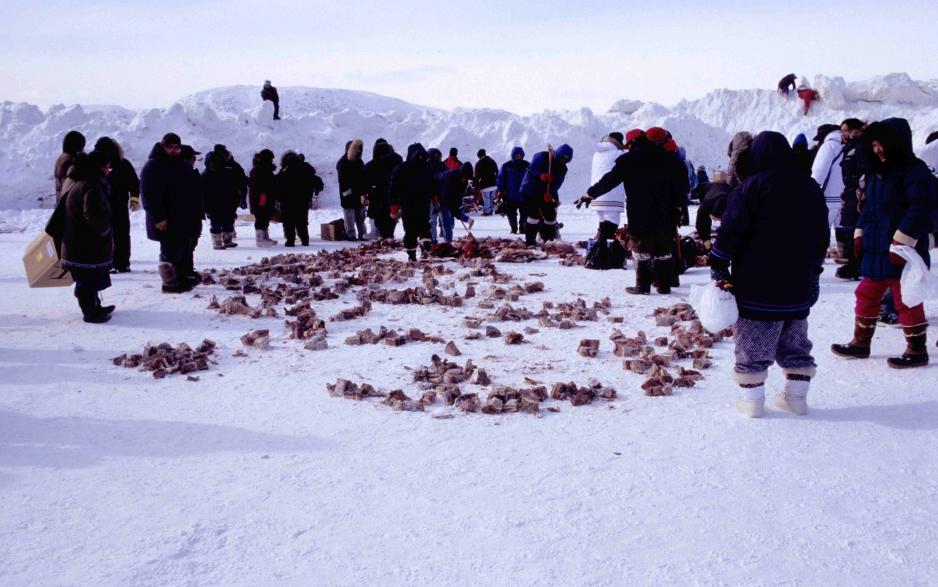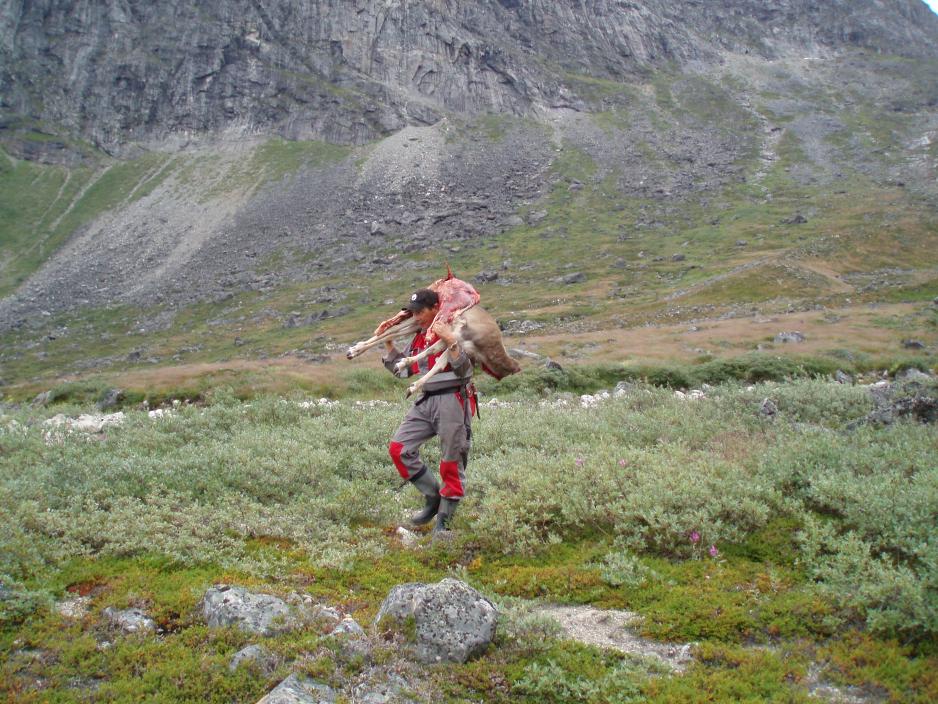Food Insecurity Prevails in Canadian North

Food insecurity continues to be a serious issue in Nunavut, despite government programmes to tackle the issue.
Although Canada is a wealthy western country with advanced technology and all aspects of modernity, food security prevails in some Canadian regions, especially in its northern territory Nunavut. And although food insecurity is not new and in fact has a long history in Canada’s North, the problem is still not solved. "Efforts have to go beyond subsidy programmes and focus on innovative approaches and strategic thinking, such as strengthening the North’s own food-producing capacities", Karolina Stecyk from the Athabasca University, Alberta, Canada, stresses.
According to recent statistics quoted in Stecyk’s new study, 45% of Nunavut households are food insecure and 60% of Nunavut‘s children live in food insecure households.
Food insecurity a main threat to human security
Food security is defined as people having physical, social, and economic access to sufficient, safe, and nutritious food. Food insecurity is recognized by the United Nations Development Programme as a main threat to human security. Food insecurity and malnutrition also impede economic growth and diminish a country’s GDP.
Government programmes such as the 2011 Nutrition North Canada (NNC) programme, which hand out subsidies to provide Northerners in isolated communities with improved access to perishable nutritious food, have apparently not yielded tangible results, Stecyk concludes in her research. Because growing and buying enough and healthy food as well as being able to take advantage of a food distribution system are still not available to many people in Nunavut.
Causes of food insecurity in Nunavut
"There are many reasons why food insecurity has still not been eradicated; it is hard to pinpoint the exact source", Stecyk tells HNN.
Geography: "The geographical location of Nunavut is one challenge, for example in form of difficult access to many communities due to missing infrastructure", Stecyk explains. There is basically no road network in Nunavut and many islands of the archipelago are hard to reach. Often the only way to deliver food is by boat or plane, leading to high costs of transport and delivery. Bad (and worsening) weather conditions, exacerbated through changing climatic conditions, can cause the cancellation of deliveries leaving people without food and other supplies crucial for daily life.
Demography: Also demographic changes in Nunavut contribute to food insecurity, Stecyk’s study explains: Although the territory’s population is small, it is also growing, requiring increasing food supplies for the region.
Ethnicity: Another factor is the ethnic composition of Nunavut’s population with 85% Inuit who have lived in the North for millennia. One the one hand, this means that specific culture and lifestyle aspects have to be considered in relation to food security and on the other, that Inuit can provide valuable information regarding food sustainability and security, the study emphasizes.
Traditionally, Inuit relied on country food, such as caribou, seal, fish, and wild berries. Inuit were traditionally hunters and gatherers; farming was not an option because of the lack of arable land in Nunavut.
Climate; Extreme (cold) climates, especially in winter, challenging daylight conditions, little rainfall, and winter ice only melting slowly in spring impede any larger scale agricultural development.
Climate change: "Also an increasingly changing climate hinders the ability to plan for food security", Stecyk emphasises. "For example, there are environmental changes in temperature, glacier melt, sea ice, and plants and animals that have cultural impacts on hunting and food preservation." Stecyk’s study mentions disturbance of vegetation and migration patterns of animals leading to fluctuations in food availability, access, and utilization as concrete contributing factors to food insecurity.
Climate change further increases the frequency of extreme events like droughts, floods, and storms. On the other hand, a warmer climate might bring about new opportunities for agriculture. "This complex picture needs to be taken into account when designing policies for the eradication of food insecurity in the North", Stecyk emphasises.

Low income, high costs
Country food is found to not be sufficient (anymore) to satisfy food security needs in Nunavut, thus commercial food deliveries from outside the region are necessary. But these come at a high cost: to stock a store in Manitoba costs around CAN$ 200,000 a year, while in Nunavut, the price tag is CAN$ 2.2 million, the study quotes. These costs are reflected in the extremely high costs for supermarket food in Nunavut.
Exacerbated by average low incomes among Inuit and high unemployment rates in the North, Inuit spend around 70% of their income on food supplies. The combination of low salaries, high food transportation costs, and high food purchase cost then results in chronic food insecurity, i.e. food insecurity prevailing throughout the year.
Impacts of food insecurity
Impacts of food insecurity are most pronounced in terms of health. These result not only from a changed Inuit diet in terms of country food being increasingly replaced with commercial food leading to a much higher intake of sugar and carbohydrates and thus to an increase in obesity, cardiovascular disease, acne, anemia, dental cavities, and type 2 diabetes. Health impacts also occur due to contaminants in caught fish that are still part of many Inuit’s traditional diet, Stecyk’s research reveals. Overall, these aspects of food insecurity result in significant health care costs for Nunavut, which in 2016 stood at half a billion CAN$.
Remedies for food insecurity in Nunavut
"There are several challenges to food security. Thus, there is no simple solution to eradicating food insecurity in Nunavut”, Stecyk tells HNN. “I believe that Nunavut would benefit from an interdisciplinary approach, focusing on self-sufficiency, and culturally appropriate and locally sustainable foods", she adds.
Good governance: "The government plays a major role in tackling food insecurity by having the capacity to establish programs and policies that can improve the availability of and accessibility to food", Stecyk explains. Generally, a system of good governance is needed to eradicate food insecurity in the North, characterised by legitimacy and inclusion, strategic vision, effectiveness and efficiency, accountability and transparency, and fairness and equity, her study outlines.
According to Stecyk’s research, "the Government of Canada does a good job following the principles for good governance". For example, multiple public consultations were held to allow people in Nunavut to voice their opinions and suggestions on the Nutrition North Canada (NNC) program. However, Nunavutans still do not have enough food to be secure or sustainable and overall, the current subsidy program is found to not effectively tackle the issue of food insecurity, especially in the long-term.
Consequently, what is needed is innovativeness and strategic thinking. One of Stecyk’s suggestions goes that the government could directly purchase and transport food to the North to ensure that food is purchased fairly and the quality is maintained.
Expanding agriculture and aquaculture: Also new initiatives to expand agriculture and aquaculture in Nunavut could be considered. Agriculture can bring values like self-sufficiency, prosperity, and experience to Nunavut, and an expanding aquaculture could reduce the amount of imported fish and create new local jobs. Successful initiatives from other Canadian territories as well as from other Arctic states could provide useful input to such new initiatives.
A ministry on agriculture for Nunavut: Finally, creating an explicit political mandate on local and/or national level to fight food insecurity is desirable; currently competencies are located rather vaguely in different ministries such as Economic Development and Transportation. Creating a separate ministry on agriculture for Nunavut would be a sensible move, Stecyk finds, to put more emphasis on the value of food security and focus on specifically designed programs and initiatives
"Food insecurity is, however, not a problem unique to the Canadian North", Stecyk tells HNN. "Also Greenland, Northern Ontario (Canada), and Alaska face food security challenges."
